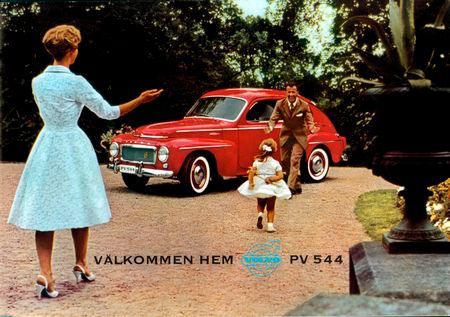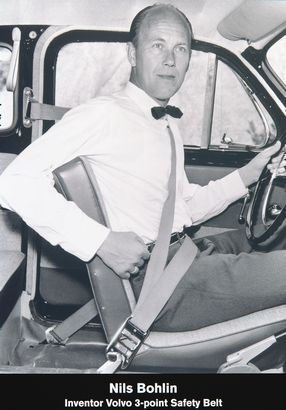Volvos three point safety belt marks its fiftieth anniversary tomorrow

Not that long ago
To younger drivers it may seem like they’ve always been around, but for many of us here at LotPro.com, the year 1959 is well within our lifetimes and it marks the year when the world’s first car with standard-fit three-point safety belts was delivered to a dealer in Sweden. Car safety would never be the same.
In this galaxy
Back in the late 1920’s and early 1930’s, American physicians began demanding the use of seat belts in cars. The most common solution was the two-point belt which had been invented in the late 1800’s and some of these same doctors even outfitted their own vehicles with these safety belts.
Despite this early interest, it wasn’t until the 1950’s that seatbelts were introduced on passenger cars. On March 31, 1955, Glenn Sheren applied for a patent for an automotive seat belt, while Americans Roger Griswold and Hugh DeHaven had had their own three-point design patented in 1951.
In 1955, Ford Motor Company offered lap belts as an option, while Saab became the first manufacturer to offer lap belts as standard equipment in 1958.

Volvo was the first
While other inventors had been issued earlier patents and other manufacturers may have offered safety belts in vehicles in prior years, the modern era of vehicle seatbelts began on Thursday August 13, 1959, when the world’s first car with standard-fit three-point safety belts (U.S. Patent 3,043,625), a Volvo PV544, was delivered to the Volvo dealer in the Swedish town of Kristianstad.
Credit for today’s standard in safety belt design goes to Nils Bohlin, a Swedish engineer who started his career as an aircraft engineer in 1942. Although eventually responsible for developing catapult seats in 1955, Bohlin became interested in an opposite phenomenon – keeping the body safe during extreme deceleration.
.jpg)
In 1958, he was recruited by the president of Volvo to be a safety engineer and given the opportunity to develop his ideas and in 1958 this work resulted in a patent application for a three-point belt that, according to Volvo, was based on four golden rules:
“The belt consisted of both a hip or lap belt and also a diagonal belt across the upper body, which was positioned correctly from the physiological viewpoint. That is to say across the pelvis and the ribcage, and attached at a low anchorage point beside the seat. The belt geometry formed a "V" with the peak pointing down towards the floor. In addition, the belt stayed in position and did not move when it was under load.”
.jpg)
The rest is history
Although the 1959 three-point seat belt looks much the same as those found in current vehicles, it has become part of a comprehensive vehicle safety system for all manufacturers, as evidenced by the following list of innovations from Volvo:
1959 Three -point safety belt in the front, a Volvo innovation
1967 Safety belts fitted as standard, rear
1969 Three -point inertia-reel safety belts, front
1971 Safety belt reminders, front
1972 Three -point safety belts, rear
1986 Three -point safety belts, rear middle seat
1987 Mechanical belt pre-tensioner
1991 Automatic height adjustment for safety belts, front
1992 Pyrotechnical belt pre-tensioners, front
1993 Three -point inertia-reel safety belts in all seats
1996 Force limiters in safety belts, front
1999 Pyrotechnical belt pre-tensioners in all seats
1999 Force limiters in hip belts, front
2003 Safety belt reminders in all seats
2003 Pyrotechnical belt pre-tensioners for hip belts, front
2003 Adaptive force limiters, front
2007 2-level force limiters for children and adults respectively, rear
2008 Adaptive force limiters for low-speed impacts (PRS), front
.jpg)
Bohlin’s invention
Although its effectiveness certainly needs no confirmation, other than the hundreds of thousands of lives it has saved and the millions of injuries it has either prevented or reduced, Bohlin's invention has been identified by German patent registrars as one of the eight patents to have the greatest significance for humanity during the hundred years from 1885 to 1985.
What does the future hold for the seat belt? "At Volvo we are convinced that the belt will still be around in 2020 and way beyond that too. The belt may look somewhat different. It may have a four-point attachment instead of three. It will probably be designed so it is even easier to put on than it is today. Only when we have cars that automatically ensure that they are not involved in collisions can we do away with the belt. But that's a long way off yet, even though there is a lot of research going on in that area too," explains Lennart Johansson.
Thank you, Nils Bohlin.
.jpg)
All images courtesy of Volvo Car Corporation












